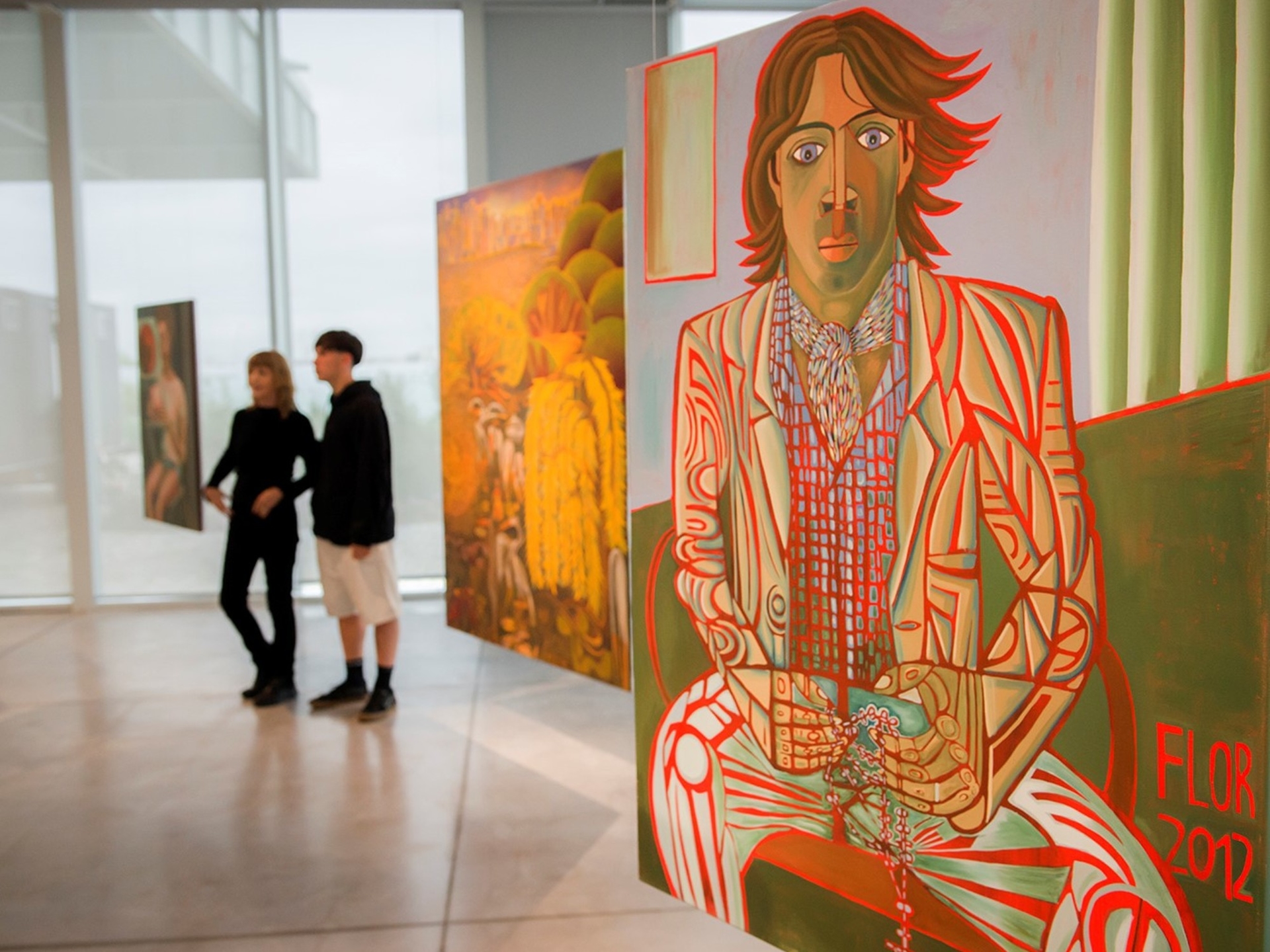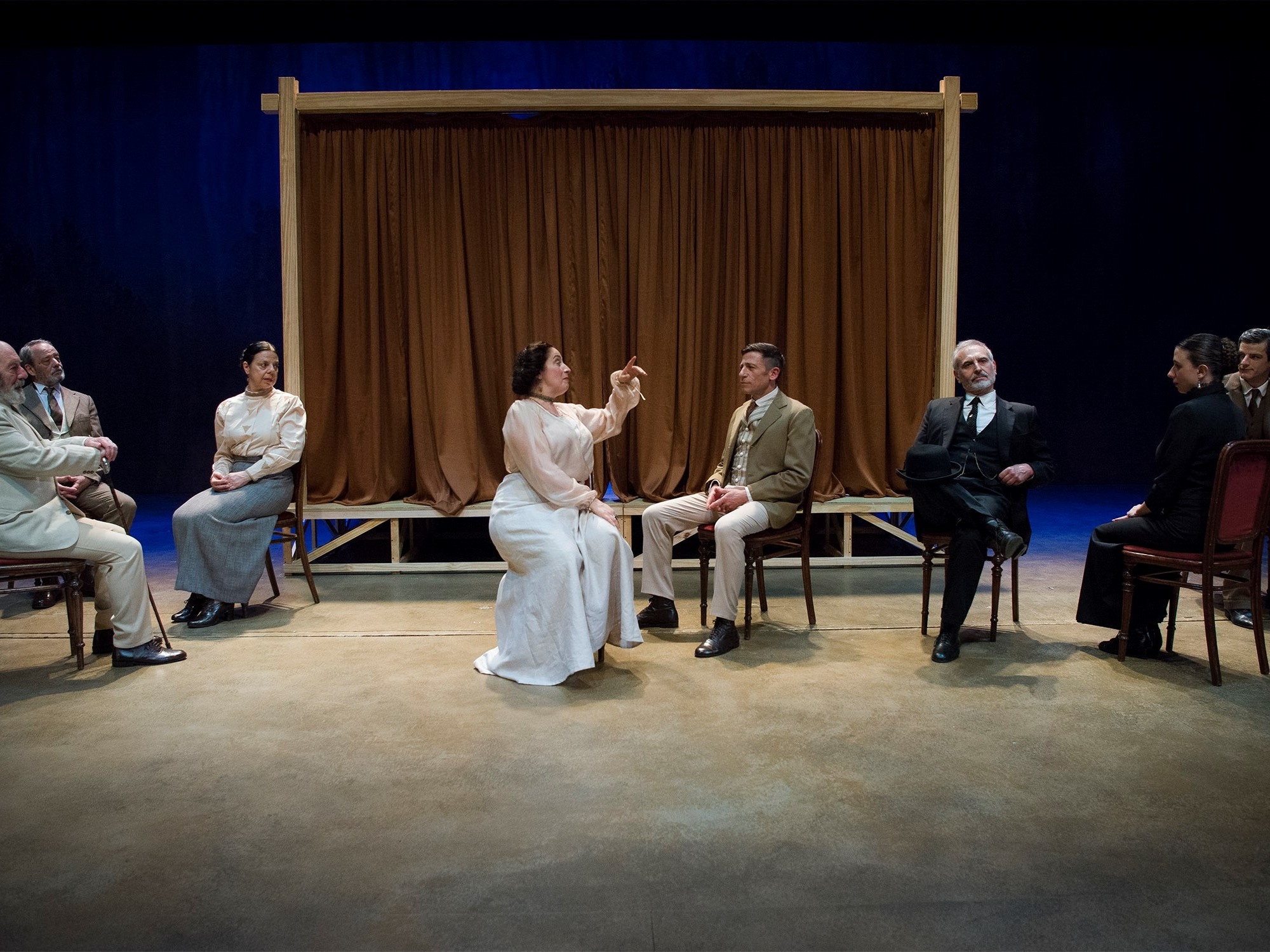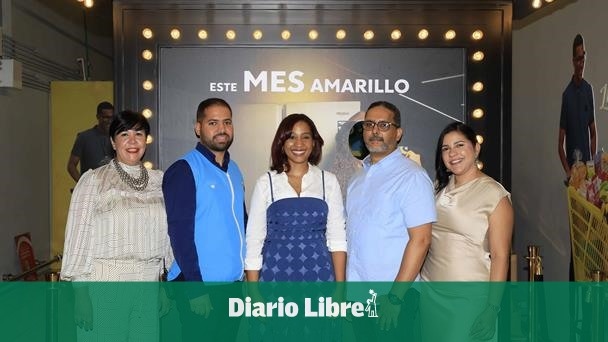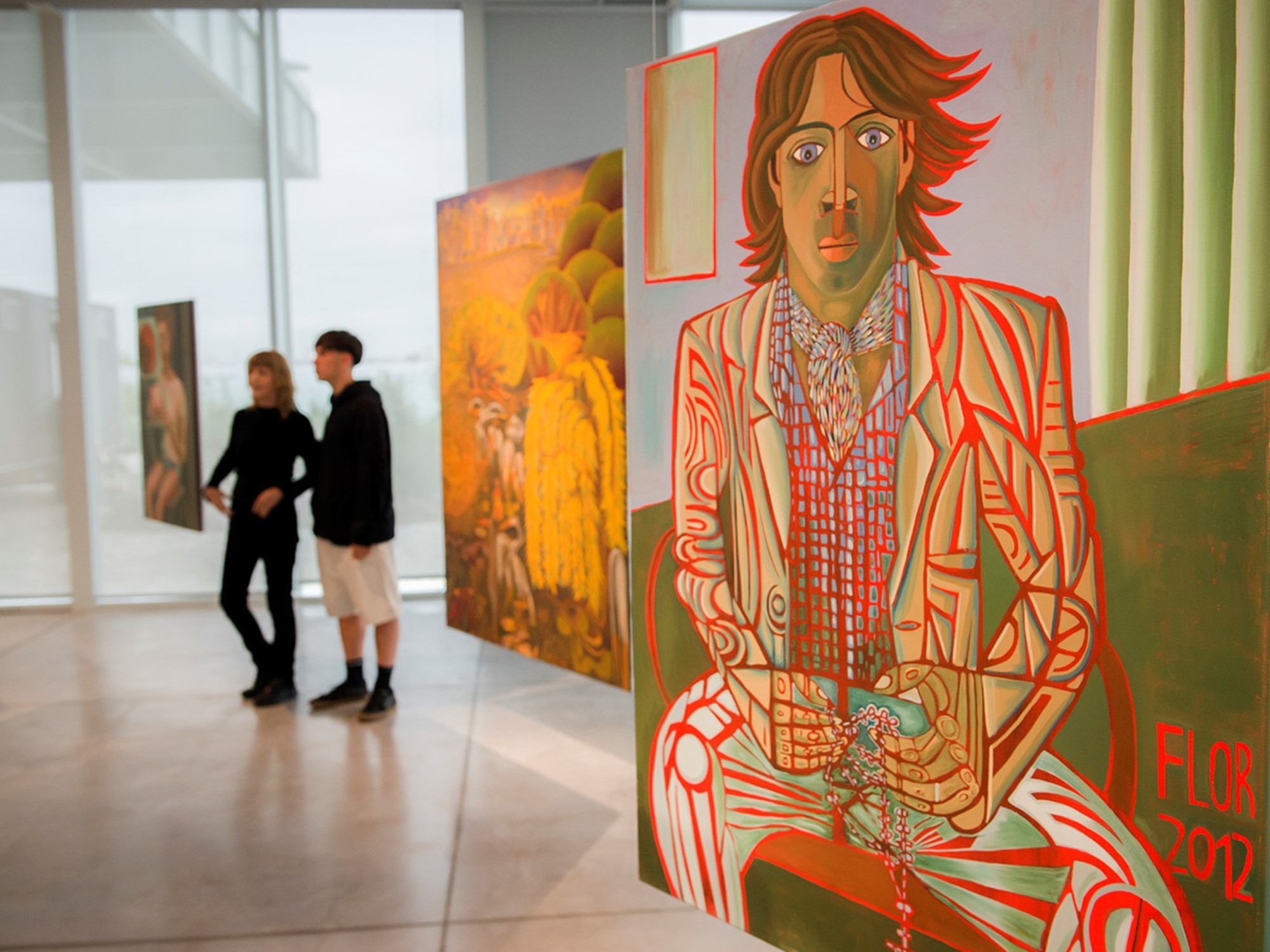Florencia Böhtlingk at Malba Ports: Painting with the vibration of the immediate

Sitting outdoors, Florencia Böhtlingk makes watercolor sketches, one after another. She can make up to thirty. “Sur le motif,” the artist says. This pictorial practice, immersed in nature and developed in Europe in the late 18th and early 19th centuries, granted autonomy to the sketch and renewed prestige to the landscape. It is the starting point of the artist's creative process. Later, in her studio, she develops the final work based on these preparatory sketches. She also paints portraits in oil, that other great genre of painting where the subject is depicted in front of the canvas.
 La Bonita area. From the Misiones series, 2013. Oil on canvas. 200 x 160 cm.
La Bonita area. From the Misiones series, 2013. Oil on canvas. 200 x 160 cm.But in her work, these traditional forms seem to function as elements she selects from the vast toolbox that is the history of painting to create a contemporary and singular production. At once figurative and abstract, rational and sensitive, interior and exterior, chromatic and linear. And committed to her time and social space. The more than eighty works in the Malba Puertos gallery make this evident, showcasing the artist's trajectory over the last fifteen years in a well-deserved first institutional exhibition, curated with the precise eye of Alejandra Aguado.
I swear all this happened in a single day. The title reveals a playful and literary imagination. “An adventure in which addressing reality can be, in the artist's words, pure fantasy,” Aguado notes in the exhibition text. Fantasy is anchored in reality. In this case, the reality of the urge to paint. “I think a lot about what painting is for me. I decided it's a passion. Behind that comes the whole connection with the craft, my colleagues, and my own work ,” she told Ñ.
The Río de la Plata and Misiones. Two privileged landscapes featured in her paintings. In the first case, her gaze falls on the islands of the Delta and the Ribera Norte Natural Park in the San Isidro district, with its reeds, herons, ceibo trees, and floods. And on the interior of her home studio. In the second, on the rural and jungle-like geography of La Bonita in the La Flor settlement. “Being in front of the subject always gives me an adrenaline rush, a feeling of taking a leap of faith, and, on the other hand, a sense of commitment. You have to keep going no matter what,” the artist tells me, in a statement that also reveals a certain struggle and willpower.
 Florencia Böhtlingk at Malba Ports.
Florencia Böhtlingk at Malba Ports.European and Latin American modernity is glimpsed, recalling at times the work of Brazilian Tarsila do Amaral, Uruguayan Joaquín Torres García, French Henri Matisse, naive art, 1960s muralism, among other artists and movements . This genealogy is explored through a profusion of color, lines, and compositional choices: frontality, hierarchical perspective, and geometric abstraction.
Böhtlingk mentions the Uruguayan painter Carlos Giambiagi , who in the second decade of the last century settled in the Misiones rainforest following the writer Horacio Quiroga . In the work "Villanueva in the Workshop" (2014), the names "Preloran, Giambiagi, Chucalezna" appear, a trilogy of names linked to painting, landscape, art education, and ethnography. This is because what is portrayed is a collective experience ("Community Skewer at School," "Sunset in the Guarani Village," both from 2016). In this way, he establishes dialogues and a sense of community with the peers with whom he paints, with the areas visited and depicted, and with intellectual and artistic references.
 Words are images. Missions Series, 2020. Acrylic and oil.
Words are images. Missions Series, 2020. Acrylic and oil.Writing permeates several works, eventually taking center stage in "Words Are Images" (2010) and "The Campaign" (2019). "Words sometimes function as anchors for the abstract nature of a landscape," the artist tells me. From the landscape of a social demonstration, she retains only what has been said, heard, and written, achieving another image of a social fabric. Like a cloud of words, but without hierarchical relationships. "Using typography linked to crafts, street art, and spontaneous signage, the works capture a reality where vital and antagonistic forces coexist. Variegated and vibrant (...) the words express the current state of the territory and the equivalence that exists in Böhtlingk's work between painting and naming," Aguado writes. The word as pictorial performance, I think.
 Faivovich. Portraits Series, 2013. Oil on canvas.
Faivovich. Portraits Series, 2013. Oil on canvas.The artist was born in Buenos Aires in 1966. Between 1985 and 1989, she attended the Prilidiano Pueyrredón School of Fine Arts and the Ernesto de la Cárcova Higher School of Fine Arts , where she studied with Jorge Demirjian, among others. She continued her training in Luis Felipe Noé's workshop and participated in the Kuitca Fellowship between 1994 and 1995. She received the Second National Painting Prize from the Central Bank (2017) and the Third Painting Prize from the National Arts Fund (2019). Her works are included in the collections of the Malba Museum of Modern Art of Buenos Aires, among others.
 Paiva's Birthday. Río de la Plata Series, 2014.
Paiva's Birthday. Río de la Plata Series, 2014.The portraits of friends and acquaintances take place indoors. In the exhibition, while landscapes are displayed on the walls and sketches in glass cases, following a temporal and chromatic logic (greens, blues, yellows, browns), the portraits and self-portraits acquire a scenographic dimension, hung and suspended in space. In this way, they gain a presence that sharply confronts us with our own physical reality. In some of them, the figures are reading: One Hundred Years of Solitude, Crime and Punishment, The Silbury Treasure . The self-portrait subgenre appears, lending prominence to a gaze of almond-shaped eyes. Böhtlingk also paints himself in his artistic process, as in Self-Portrait in the Reserve (2016) and Painting Watercolors (2014).
 Augustine. From the Portraits series, 2012. Oil on canvas. 120 x 100 cm.
Augustine. From the Portraits series, 2012. Oil on canvas. 120 x 100 cm.The images linger as I leave the large room. I pass once more by the small watercolors of the waterfalls, those longitudinal cascades. Full of beauty and sensitivity in their representative synthesis, they bring a portion of the landscape closer with unusual vitality. A magical beginning to a work that reminds us of the possibility of finding paradise very close, if we so desire.
- Florencia Böhtlingk. Works 2010-2024
- Location : Malba-Puertos. Alisal 160 Bahía, Puertos. Escobar.
- Opening hours : Thursdays to Sundays from 12 to 7 pm.
- Date : until March 8, 2026.
- Admission : Free.
Ten days earlier, the attack on the Twin Towers in New York had occurred, and the country was experiencing a major social, political, and economic crisis. Against this international and local backdrop, the Museum of Latin American Art of Buenos Aires (MALBA) was inaugurated on September 21, 2001, founded by Eduardo F. Costantini with the donation of his collection of 220 works. Today, its holdings number 750 pieces, making it one of the most important in the world. MALBA's 25th anniversary will take place in September 2026. The institution told Ñ that a three-day program is being prepared, including the opening of a new exhibition of the Collection curated by Rodrigo Moura, Institutional Director, and a globally distributed publication. In addition, there will be an international gala on the 17th, a seminar on Latin American art on the 18th, and a full day of celebrations with the museum open to the public, activities, and a concert on the 19th.
Clarin





